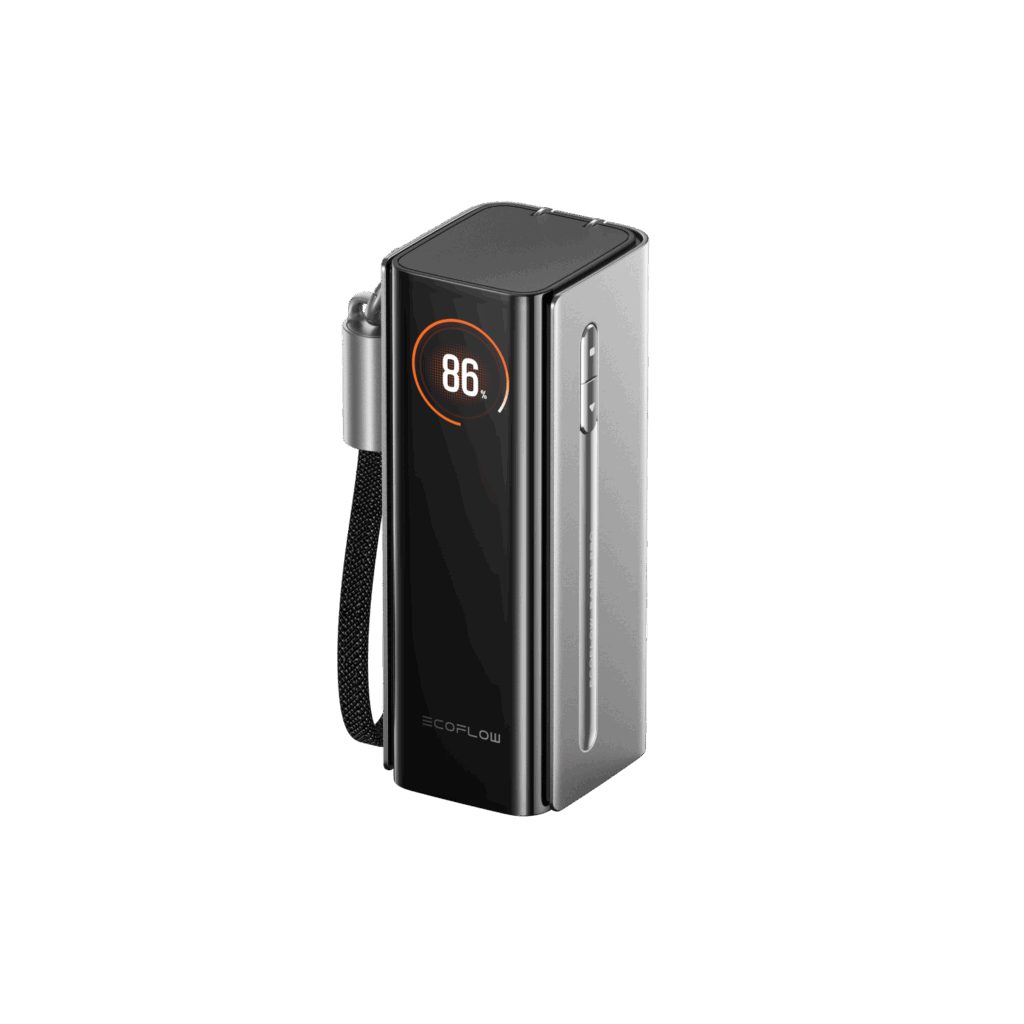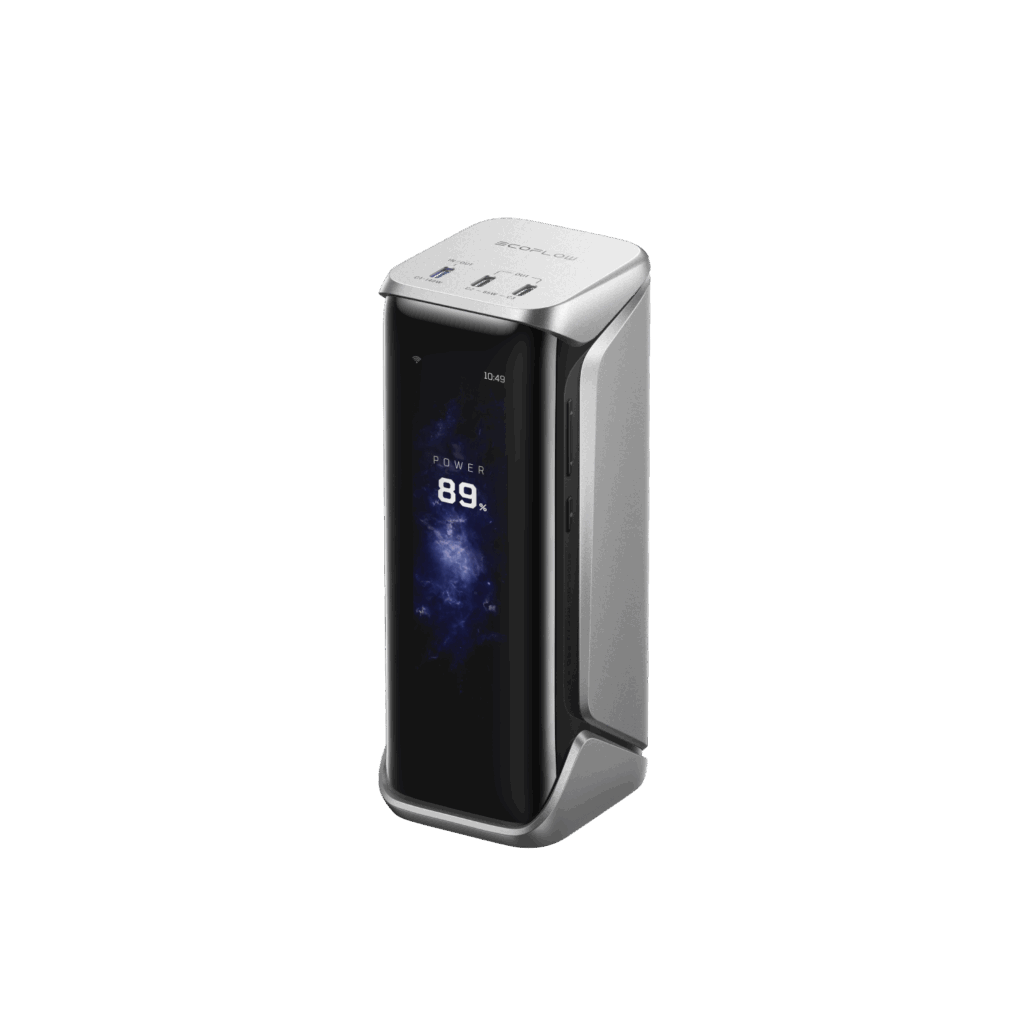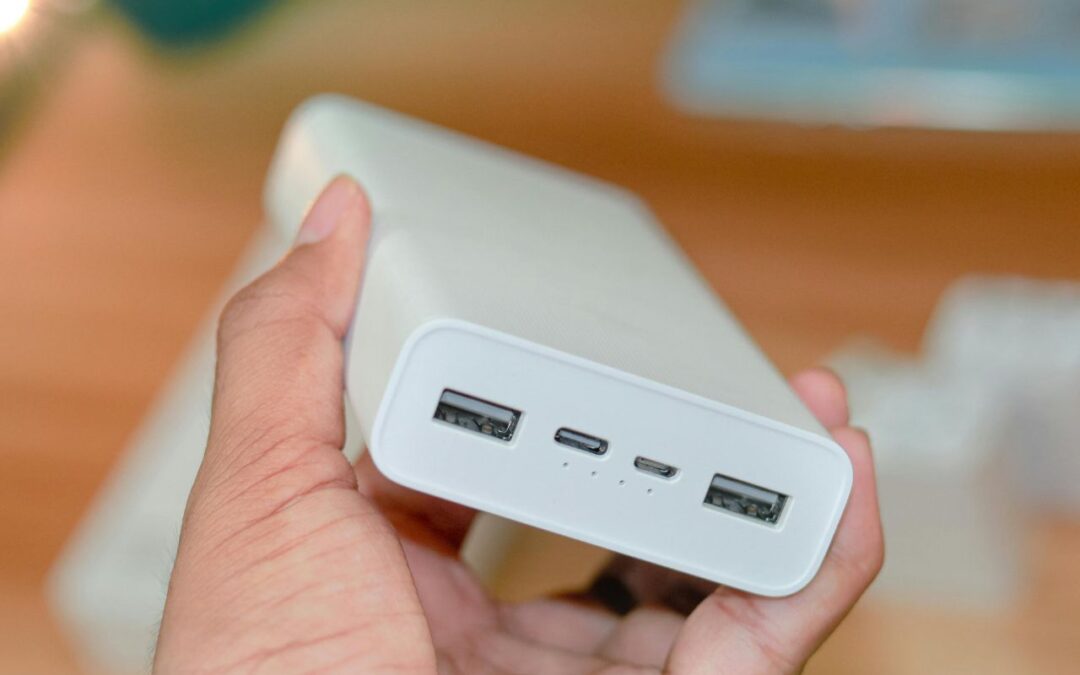Remote work has surged by 159% since 2009, with 42% of the US workforce now operating from various locations beyond traditional offices. This mobility revolution creates a critical challenge: maintaining device power across laptops, smartphones, tablets, and accessories during crucial work moments.
Dead batteries during client calls, presentations, or deadline pushes can derail productivity and professional reputation. Multi-device charging capabilities have evolved from convenience to absolute necessity for remote professionals managing complex digital workflows.
Modern power banks represent a new generation of portable charging solutions designed specifically for simultaneous multi-device power delivery. Selecting the right power bank requires understanding capacity requirements, port configurations, charging protocols, and real-world usage patterns. The difference between adequate and exceptional portable power lies in matching technical specifications to your specific device ecosystem and work demands.
The Remote Worker’s Charging Dilemma
Today’s remote professionals juggle an average of 3.2 devices simultaneously, creating a complex web of power dependencies that traditional charging methods cannot adequately support. The typical remote worker relies on a laptop as their primary workstation, a smartphone for communication and quick tasks, and often a tablet for presentations or secondary displays.
Each device consumes power at different rates throughout the workday, with laptops demanding 45-65 watts during intensive tasks, smartphones requiring 15-20 watts for rapid charging, and tablets needing 20-30 watts for optimal performance.
Traditional charging setups force users into compromise situations where they must choose which devices to prioritize, often leading to the dreaded scenario of a dead laptop battery during a crucial video conference or a smartphone dying during an important client call. Coffee shops, co-working spaces, and home offices frequently lack sufficient outlets or convenient positioning for multiple charging cables.
This creates a productivity bottleneck where device management becomes a constant distraction from actual work. The modern remote worker needs a solution that eliminates charging anxiety and enables true mobility without sacrificing device uptime or performance during critical business moments.

Essential Power Bank Features for Multi-Device Charging
Capacity & Power Delivery Systems
Multi-device charging demands power banks with a minimum 20,000mAh capacity to sustain a laptop, smartphone, and tablet through a full workday. USB Power Delivery (USB-PD) protocol outperforms Quick Charge (QC) for laptop compatibility, supporting up to 100 watts compared to QC’s 27-watt limitation.
Remote workers running intensive applications need power banks delivering 65+ watts to laptops while maintaining 15-20 watts for smartphones simultaneously. The sweet spot for most professionals involves 25,000-30,000mAh capacity with 100-watt USB-PD output, ensuring laptop charging speed matches consumption during video calls and document editing.

Port Configuration & Smart Charging
Optimal port configurations feature two USB-C ports supporting USB-PD, one USB-A port for legacy devices, and potentially an AC outlet for maximum versatility. Smart charging technology automatically detects connected devices and allocates appropriate wattage, preventing overcharging while maximizing charging speed.
Advanced power banks employ dynamic power distribution, adjusting output as devices reach full capacity to maintain optimal charging across all connected equipment. Overcharge protection mechanisms include temperature monitoring, voltage regulation, and automatic shutoff features that protect both the power bank and connected devices from damage during extended charging sessions.
Top Power Banks for Remote Work Setups
EcoFlow RAPID Pro Deep Dive
The EcoFlow RAPID Pro leverages proprietary X-Stream charging technology that delivers 90% efficiency rates compared to standard 75% efficiency in conventional power banks. Real-world testing demonstrates simultaneous charging of a MacBook Pro at 65 watts, iPhone at 20 watts, and iPad at 30 watts for 4.5 hours continuously without performance degradation.
The unit’s 26,800mAh capacity strikes an optimal balance between portability at 1.8 pounds and power delivery capability, fitting comfortably in laptop bags while providing full-day charging support. Advanced heat dissipation systems maintain optimal performance during intensive multi-device charging sessions that typically cause thermal throttling in competing models.

Alternative High-Performance Portable Power Banks
The Anker PowerCore III Elite competes directly with 87-watt USB-PD output and 25,600mAh capacity, excelling in budget-conscious scenarios while sacrificing some charging speed efficiency.
Goal Zero Sherpa 100PD targets outdoor remote workers with rugged construction and solar charging compatibility, though its 25,600mAh capacity limits extended laptop use. RAVPower PD Pioneer offers premium features including wireless charging pads and 90-watt output, ideal for tech-heavy workflows requiring maximum device compatibility.
Value-focused professionals benefit from Aukey’s 30,000mAh models providing excellent capacity-to-cost ratios, while premium users investing in EcoFlow or Goal Zero solutions gain superior build quality, advanced safety features, and manufacturer support that justifies higher upfront costs for mission-critical remote work applications.
Building Your Charging Workflow: Step-by-Step Solutions
STEP 1: Audit your device ecosystem by documenting each device’s battery capacity, charging requirements, and daily usage hours. Record your laptop’s wattage needs during video calls versus light tasks, smartphone charging frequency during work hours, and any additional devices like wireless earbuds or smartwatches that require power throughout the day.
STEP 2: Calculate daily power requirements by multiplying each device’s consumption by usage hours, then adding 25% buffer for unexpected extended work sessions or emergency situations. A typical remote worker needs 150-200Wh total capacity for laptop, smartphone, and tablet combined.
STEP 3: Match power bank specifications to your calculated needs, prioritizing USB-PD compatibility for laptops and ensuring total output wattage exceeds your simultaneous charging requirements.
STEP 4: Implement cable management strategies using cable organizers, magnetic cable holders, and dedicated charging zones to eliminate setup time and reduce workspace clutter.
STEP 5: Create location-based charging stations by identifying your most frequent work locations and establishing consistent power bank placement, cable routing, and device positioning that becomes automatic muscle memory, eliminating decision fatigue around device charging logistics.
Maximizing Power Bank Efficiency & Lifespan
Temperature management proves critical for power bank longevity, with optimal operating ranges between 32-95°F preventing battery degradation that reduces capacity by up to 20% annually. Avoid charging in direct sunlight or enclosed vehicle compartments where temperatures exceed 100°F.
Partial charging cycles between 20-80% capacity extend lithium battery lifespan significantly compared to full discharge cycles, maintaining 80% original capacity after 1,000 cycles versus 500 cycles with complete drain patterns. Store power banks at 50% charge in cool, dry environments when unused for extended periods, checking and topping off every three months to prevent deep discharge damage.
Regular firmware updates through manufacturer apps optimize charging algorithms and safety protocols, ensuring peak performance and compatibility with newer device charging standards that emerge throughout the power bank’s operational lifespan.
Optimizing Your Remote Work Power Strategy
Successful remote work power management hinges on three core principles: matching power bank capacity to your actual device ecosystem, prioritizing USB-PD compatibility for laptop charging, and implementing systematic charging workflows that eliminate decision fatigue.
The EcoFlow RAPID Pro’s combination of 90% charging efficiency, 26,800mAh capacity, and intelligent power distribution makes it the standout choice for professionals managing multiple high-wattage devices simultaneously. Remote workers who invest in proper portable power solutions report 23% fewer productivity interruptions and significantly reduced stress around device battery management during critical work moments.
Your charging setup should work invisibly in the background, enabling focus on meaningful work rather than constant battery monitoring. Take 15 minutes this week to audit your current device power consumption patterns, calculate your daily charging requirements, and identify the gaps in your existing setup that a quality multi-device power bank could eliminate permanently.






